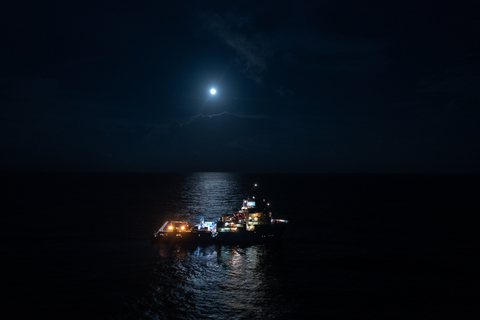The Metals Company Completes Latest Deep-Sea Research Campaign on Path to Tap Planet’s Largest Known Source of EV Battery Metals
The Metals Company has successfully completed Environmental Expedition 5E, part of its $75 million deep-sea research program aimed at establishing environmental baselines for its polymetallic nodule collection operations. This campaign involved advanced technologies and collaborations with leading marine science institutions, resulting in over 35,000 high-resolution images and 1,200 specimen samples. The data collected will aid in understanding the ecosystem and mitigating impacts from future operations in the Clarion Clipperton Zone, where TMC aims to meet the increasing demand for battery metals in the clean energy transition.
- Successful completion of Environmental Expedition 5E, enhancing research credibility.
- Collaboration with top marine science institutions, leading to high-quality data collection.
- Positive revision of nodule resources from 320Mt inferred to 341Mt indicated, improving resource confidence by 7%.
- None.
Insights
Analyzing...
-
The Metals Company successfully concluded Environmental Expedition 5E, the latest campaign in its$75 million - Scientists on board used a suite of cutting-edge technologies including a Remotely Operated Vehicle (ROV) and seafloor landers to sample abyssal megafauna, and to gather critical data on deep-sea ecosystem function
-
The researchers involved represent some of the world’s leading marine science institutions including the
UK National Oceanography Centre,Japan Agency for Marine-Earth Science & Marine Technology (JAMSTEC),Natural History Museum (London ),Heriot-Watt University and theUniversity of Gothenburg .

The completion of the six-week expedition — the Company’s fifth environmental campaign in the last twelve months — marks the latest offshore campaign required to develop an environmental baseline of the Company’s proposed operating environment in the
Aboard the Maersk Launcher were researchers from some of the world’s leading marine science institutions including the
Over the course of more than 390 ROV operational hours, researchers from the
To explore the gelatinous communities that occupy the midwater column , the pelagic team led by JAMSTEC supplemented traditional sampling methods such as nets with ROV mounted video to conduct 130 video transects at various depths, and used specialized D-samplers and the ROV’s suction sampler to collect specimens.
A team led by
Planet’s largest known source of battery metals
TMC’s NORI-D nodule project — recently ranked as the #1 nickel project in the world by Mining.com — is the first in the Company’s project development pipeline. In January,
As countries invest in large-scale clean energy transition programs and begin to phase out internal combustion engines, hundreds of millions of tons of critical battery metals will be needed to decarbonize the world’s energy and transport systems, according to the International
About
TMC the metals company Inc. (
Forward Looking Statements
Certain statements made in this press release are not historical facts but are forward-looking statements for purposes of the safe harbor provisions under The Private Securities Litigation Reform Act of 1995. Forward-looking statements generally are accompanied by words such as “believe,” “may,” “will,” “estimate,” “continue,” “anticipate,” “intend,” “expect,” “should,” “would,” “plan,” “predict,” “potential,” “seem,” “seek,” “future,” “outlook” and similar expressions that predict or indicate future events or trends or that are not statements of historical matters. The forward-looking statements contained in this press release include, without limitation, TMC’s expectations with respect to the success of its research campaign Environmental Expedition 5E, the results or outcomes of the campaigns and expeditions and the data generated during Environmental Expedition 5E respectively. These forward-looking statements involve significant risks and uncertainties that could cause the actual results to differ materially from those discussed in the forward-looking statements. Most of these factors are outside TMC’s control and are difficult to predict. Factors that may cause such differences include, but are not limited to: regulatory uncertainties and the impact of government regulation and political instability on TMC’s resource activities; changes to any of the laws, rules, regulations or policies to which TMC is subject; the impact of extensive and costly environmental requirements on TMC’s operations; environmental liabilities; the impact of polymetallic nodule collection on biodiversity in the CCZ and recovery rates of impacted ecosystems; TMC’s ability to develop minerals in sufficient grade or quantities to justify commercial operations; the lack of development of seafloor polymetallic nodule deposit; uncertainty in the estimates for mineral resource calculations from certain contract areas and for the grade and quality of polymetallic nodule deposits; risks associated with natural hazards; uncertainty with respect to the specialized treatment and processing of polymetallic nodules that TMC may recover; risks associated with collective, development and processing operations; fluctuations in transportation costs; testing and manufacturing of equipment; risks associated with TMC’s limited operating history; the impact of the COVID-19 pandemic; risks associated with TMC’s intellectual property; and other risks and uncertainties, including those in the “Risk Factors” sections, included in the final prospectus and definitive proxy statement, dated and filed with the
View source version on businesswire.com: https://www.businesswire.com/news/home/20220105005578/en/
Media | media@metals.co
Investors | investors@metals.co
Source:







